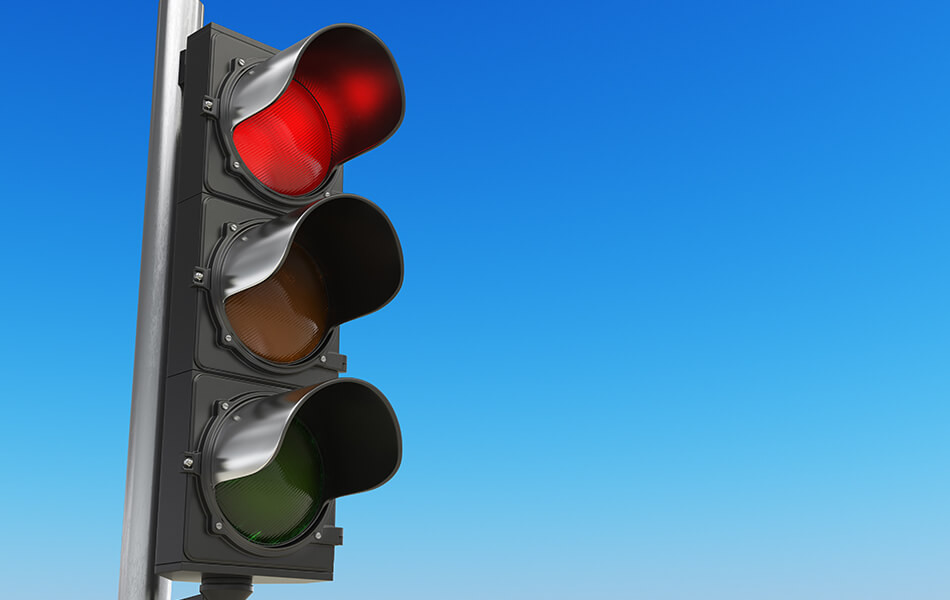A red traffic light is a universally recognized symbol for stopping. But for drivers in many parts of the United States, a red light doesn’t always mean coming to a complete standstill. Right turns on red lights, after a complete stop and yield to oncoming traffic and pedestrians, are a common practice to improve traffic flow. This convenience comes with its own set of rules and safety considerations, and understanding them is crucial for all drivers.
This blog post delves specifically into the right turn on red rule in Vermont as of 2024. We’ll explore the legalities, safety precautions, and situations where a right turn on red might not be allowed. Whether you’re a seasoned driver in Burlington or a new resident navigating the streets of Rutland, this information will equip you to make safe and legal right turns at red lights in Vermont.
Right Turn on Red in Vermont: The Legal Landscape
Vermont, like most states, allows right turns on red lights under specific conditions. This permission is based on Title 23, Chapter 10 of the Vermont Statutes Annotated [Vermont Statutes]. The key points to remember are:
- Complete Stop: You must come to a complete stop before the designated stop line or crosswalk, whichever is closer to the red light.
- Yielding the Right of Way: Before proceeding with the turn, you must yield the right of way to all pedestrians crossing the street in the direction you intend to turn and to any oncoming traffic that has the green light.
- No Prohibiting Signs: There must be no “No Turn on Red” signs posted at the intersection. These signs are typically rectangular with red lettering and a white background.
Safety First: Essential Precautions for Right Turns on Red
While legal under certain conditions, right turns on red lights require extra vigilance from drivers. Here are some safety precautions to keep in mind:
- Double Check for Oncoming Traffic: Don’t rely solely on the absence of a green light for oncoming traffic. Make a full stop and look both ways for approaching vehicles, especially motorcycles and bicycles that might be harder to spot.
- Yield to Pedestrians: Pedestrians always have the right of way. Ensure there are no pedestrians crossing the street in the direction you intend to turn before proceeding. This includes those already in the crosswalk when the light turns red.
- Be Wary of Blind Spots: Large vehicles like trucks and buses can have significant blind spots. Make sure you have a clear view of oncoming traffic before turning.
- Don’t Rush the Turn: Avoid making quick or sudden turns. Take your time to assess the situation and proceed cautiously.
- Watch for Left-Turning Vehicles: Be aware of vehicles coming from the opposite direction that might be turning left in front of you.
When a Right Turn on Red Isn’t Allowed
There are situations where a right turn on red is not permitted in Vermont. Here are some red flags to watch out for:
- “No Turn on Red” Signs: As mentioned earlier, if a red octagonal sign with white lettering prohibits right turns on red, you must obey it and wait for a green light.
- Complex Intersections: Intersections with multiple lanes of traffic, turning lanes, or heavy pedestrian activity might not be suitable for right turns on red. Use your judgment and proceed with caution if unsure.
- Poor Visibility: If weather conditions like fog, rain, or snow limit visibility, it’s safer to wait for a green light to ensure a safe turn.
- Slippery Roads: During icy or wet road conditions, avoid right turns on red to minimize the risk of losing control of your vehicle.
Right Turn on Red Across Vermont: City-Specific Considerations
While the general right turn on red rule applies throughout Vermont, some city-specific factors might influence your decision:
- Burlington: As Vermont’s largest city, Burlington has a higher traffic volume, especially during peak hours. Right turns on red might be less frequent due to increased pedestrian activity and complex intersections.
- Rutland: The historic downtown area of Rutland might have narrower streets and more stop signs. Right turns on red might be more feasible on wider roads with good visibility.
- Montpelier: The state capital, Montpelier, has a smaller-town feel. Right turns on red could be more common, but caution is still advised near landmarks and areas with heavy foot traffic.
Right Turn on Red vs. Right Turn on Green: Weighing the Options
Right turns on red can be a time-saving measure, especially during periods of low traffic. However, it’s important to weigh the potential benefits against the potential risks. Here’s a breakdown of the pros and cons to help you decide:
Pros of Right Turn on Red:
- Improved Traffic Flow: Right turns on red can keep traffic moving, reducing congestion and wait times at intersections, especially during rush hour.
- Reduced Emissions: Less idling at red lights can contribute to lower overall vehicle emissions.
- Increased Efficiency: For drivers making frequent short trips, right turns on red can save valuable time.
Cons of Right Turn on Red:
- Increased Risk of Accidents: Misjudging oncoming traffic, failing to yield to pedestrians, or making a turn too quickly can lead to collisions.
- Pedestrian Safety Concerns: Right turns on red can be risky for pedestrians if drivers don’t pay close attention or prioritize their right of way.
- Stressful for New Drivers: Navigating complex intersections and heavy traffic while making right turns on red can be overwhelming for new drivers.
Tips for New Drivers and Safe Driving Habits
If you’re a new driver in Vermont, here are some additional tips to navigate right turns on red safely:
- Practice in Low-Traffic Areas: Before venturing into busy intersections, gain confidence by practicing right turns on red in areas with minimal traffic and pedestrian activity.
- Focus on Defensive Driving: Always prioritize safety over speed. Be observant, anticipate the actions of other drivers and pedestrians, and leave ample stopping distance.
- Don’t Be Afraid to Wait: If you feel unsure or visibility is poor, err on the side of caution and wait for a green light. There’s no shame in prioritizing safety over a potential time-saving maneuver.
Right Turn on Red: A Tool, Not a Right
The right turn on red rule is a privilege, not a right. It’s a tool that can be used to improve traffic flow when exercised with caution and responsibility. Remember, as a driver in Vermont, your primary responsibility is to operate your vehicle safely and legally.
Conclusion
Understanding the right turn on red rule in Vermont is essential for safe and efficient driving. By following the legal guidelines, prioritizing safety precautions, and exercising good judgment, you can navigate red lights confidently and contribute to a smoother flow of traffic on Vermont’s roads.
Disclaimer
This blog post is intended for informational purposes only and should not be construed as legal advice. Always refer to the latest Vermont Statutes Annotated [Vermont Statutes] or consult with a legal professional for definitive information on traffic laws.



